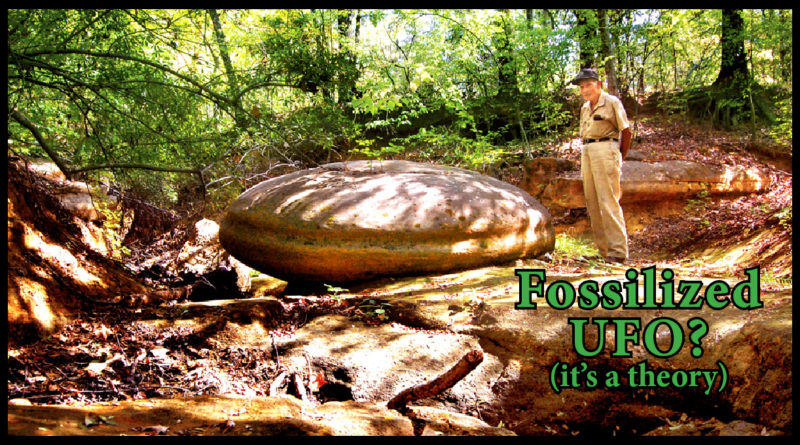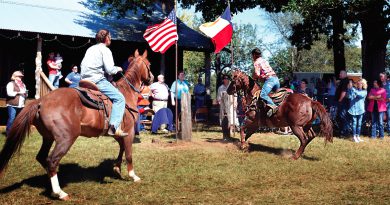Theories differ on strange geology at Jakes Creek
From the East Texas Journal August 2011
MONTICELLO, TEXAS – The thing had occupied his mind again, so Oscar Hill kept talking about the odd rock resting in a deep cut on Jakes Creek until a relative from San Antonio drove up with a camera to make a picture.
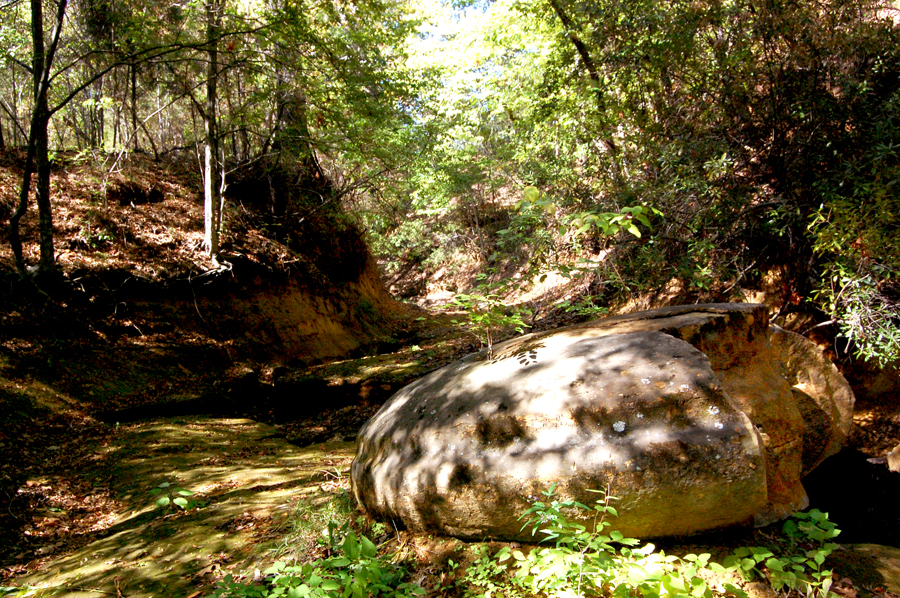
O.C. Hill’s 83, tall and lean, He wears long sleeve khaki shirts in summer because he works in the sun and briars.
“He haunts the woods like a cat,” said Madeline Johnson, a fellow Monticello native. “I guess every day he’s not doing something for somebody he’s off cleaning old graves.”
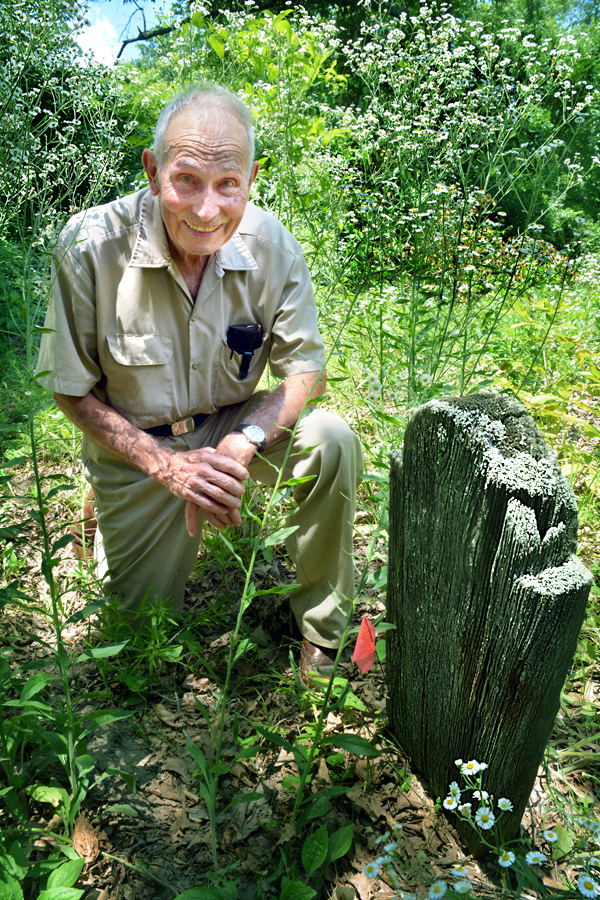
The road ended short of the old graveyard she went to with him one day.
“We hiked in,” she said. “I carried the axe and he carried the saw then went back for the posts and wire. He’d been working out there already a week. There’s no telling what he’s spent fencing off old cemeteries. He’s a reverent man.”
Calling back years to the 1950’s, Tommy Blair said the odd rock was at a swimming hole they called Soap Stone back when they were kids.
“I lived in Titus County but I went to school in Franklin County because the bus driver wouldn’t cross the old wooden bridge over Jakes Creek, he said.

Mr. Hill measured the rock at a shade over 12 feet across. Where it sits, the creek’s through the crust and carved deep slippery-when-wet banks through a sedentary rock slab of underworld. And there’s not just one rock. Halfway down the bank, where the dirt turns to rock, there’s a crescent oval form of a part of an edge of one that must be the size of a pitcher’s mound.
“We had a field up on high ground a little way from there,” Alvis Allen said. “It might have been two or three acres and so many old rocks like that we didn’t even try to plow it.”
Besides mass and spherical symmetry, there’s a groove around the middle of the rock, like somebody began honing out the place there could be a giant yo-yo string.
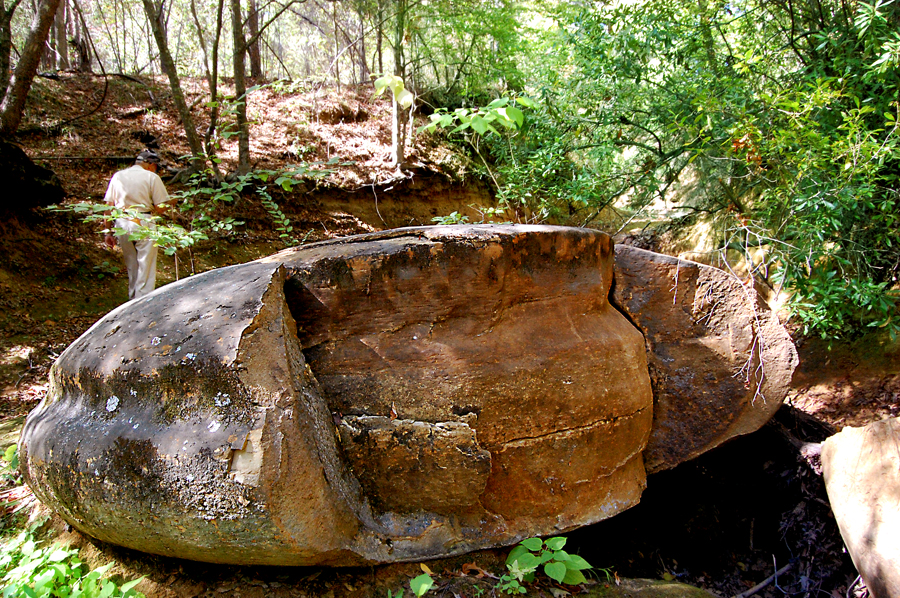
“There are a couple of ways such a rock is formed,” said a local avocational geologist. Recognizing the whole Old Earth vs New Earth debate as easy to slide into when considering it, he spoke only on the condition of annominity.
“We’ve got lignite here,” he said. “It’s an organic thing and as it decays it makes methane.
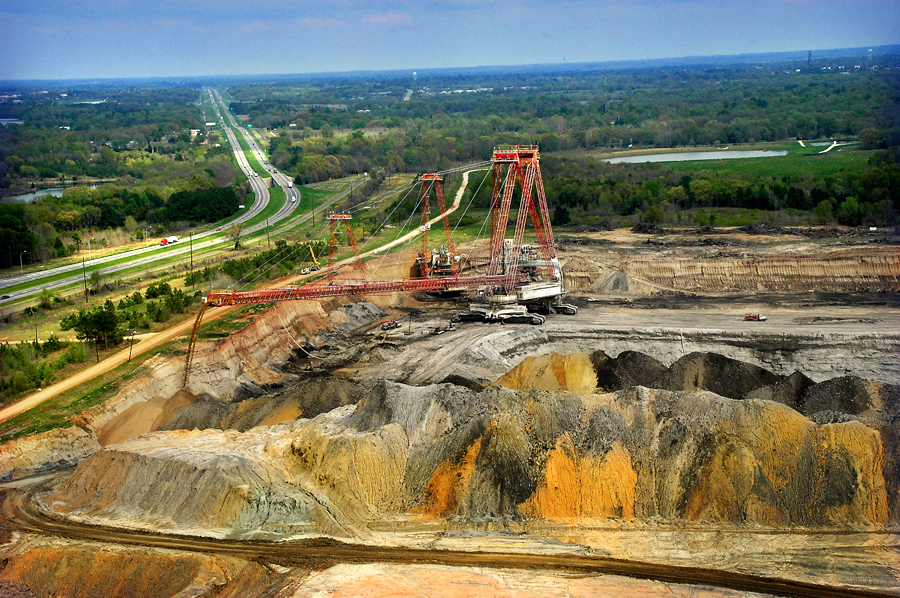
Think of a mud volcano. As the pressure of the methane builds it pushes up and deposits new layers at the surface. They spread out spread in concentric circles and each builds on top of the last.
“Think of an eddy, of a whirlpool, running water spinning and eroding and opening a hole – some geological event triggers a change – the bank of the creek caves in and fills the hole. It changes the flow of the current so that the new deposit is silted over – sedentary rocks are formed by pressure over time,” he said.

Its shape also suggests a fossilized UFO – could the area have been an ancient crash site? Landing field? (Just a theory)
Immediately downstream of the rock Jakes Creek makes a tight horse shoe bend. The creek bed drops and the soft-stone walls of the channel get taller, about as close to anything resembling a canyon as you’d find here.
“If you were determined enough you could cut into that bank,” Mr. Blair said. “Jerry Bell and I spent a day once working on a cave.”
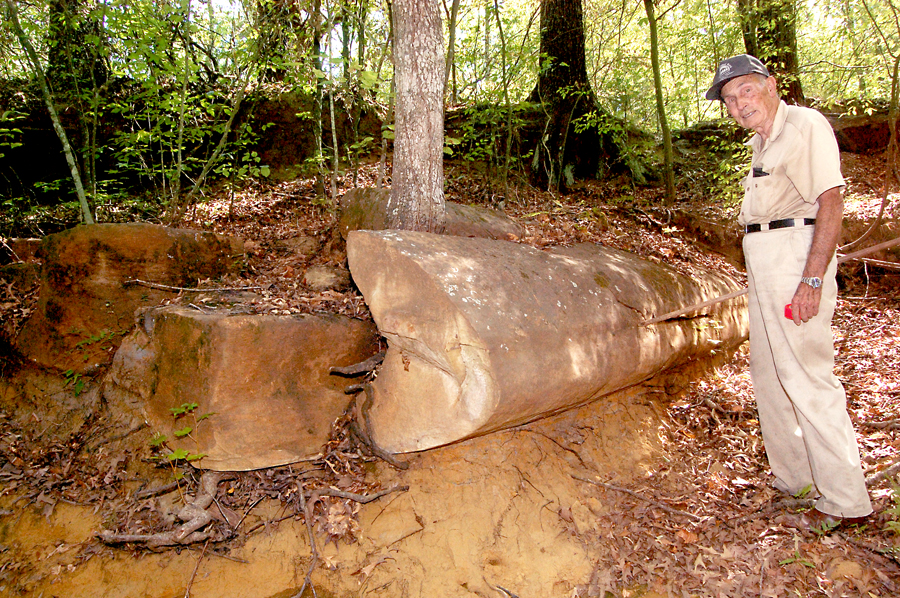
He went back several years ago. He saw the cave but the waterfall he remembered is gone. In terms of geological time, Soap Stone has changed, is changing in the blink of an eye.
What haven’t changed are O.C. Hill’s memories of the place. One summer day he slipped off from hoeing a field and came to Soap Stone. He encountered Lloyd Clark and they resumed an on-going school yard fight.
“He wasn’t as big as a minute but he was so quick I believe his fists whistled when he swung. Tough as a boot,” Mr. Hill said, and he leaned back for a minute to rest on the rock and he smiled.


